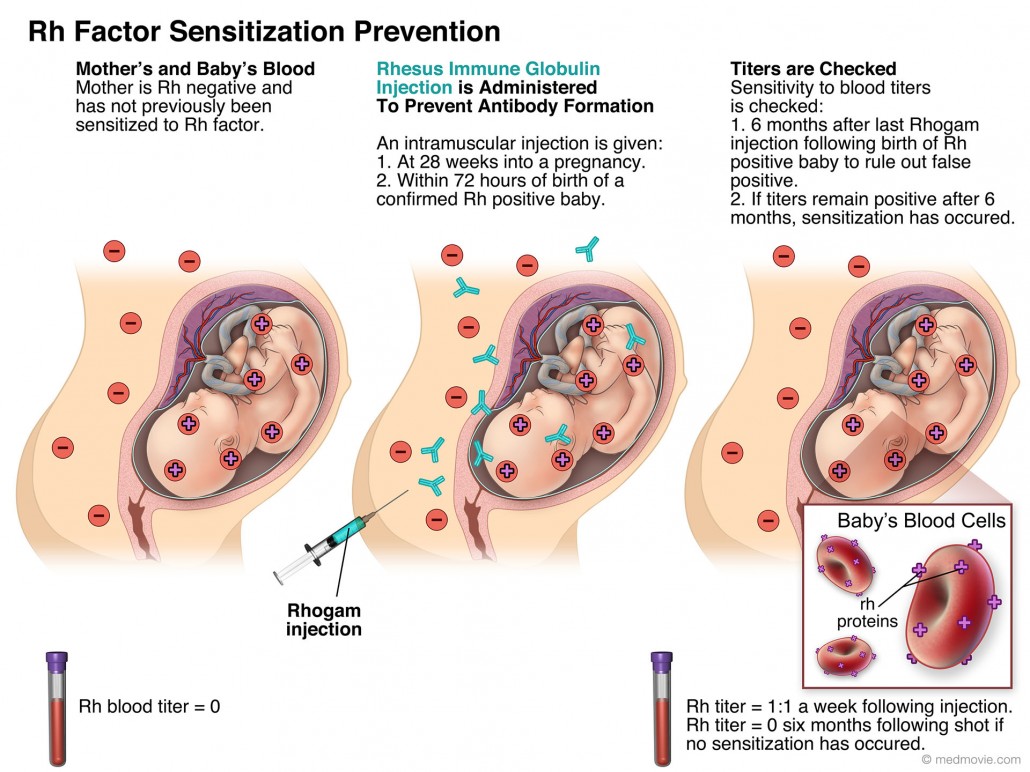

The Rh pos firstborn of an Rh neg mother will likely not develop hemolytic disease of the newborn, but the mother may form IgG anti-D antibodies after the insult with the babies blood. Protein->Peptide->MHC2->Th->Class switch to IgG. The Rh system is RBC immune, and is a protein antigen. It's amazing that it happens universally. If you're type A then you will have anti-B antibodies. But it's like clockwork that they form in everybody. They may actually be against antigens everyone sees, but cross react with blood group antigens is a hypothesis and negative selection explains why only the antibody specificity a person lacks is formed. They form naturally, and the way I learned it is we do not know exactly why anti-A and anti-B antibodies form.

This means that anti-A and anti-B antibodies do not form as a result of a person being immunized with another persons blood. The ABO blood group system is non-RBC immune, generally speaking. So there is no T-cell help from CD4 cells, because there is no peptide presentation on MHC2. They are IgM's because the epitopes they are specific for are carbohydrate moieties. When a woman is Rh negative and her fetus is Rh positive, it is called Rh incompatibility. If a fetus does not inherit the Rh factor from either the mother or father, then the fetus is Rh negative. Anti-A and Anti-B are IgM antibodies, and cannot cross the placenta. Most people are Rh positive, meaning they have inherited the Rh factor from either their mother or father. If you have any doubts, we recommend to consult your doctor for clearer information.The reason is what you said. TheAsianparent Philippines is not responsible to those that would choose to drink medicines based on information from our website. But this doesn’t serve as an alternative for medical advise or medical treatment. Here at theAsianparent Philippines, it’s important for us to give information that is correct, significant, and timely. MayoClinic, Healthline, KidsHealth, ClevelandClinic With early detection, intervention, and treatment of Rh incompatibility, a soon-to-be mom can focus on more important things, that is, giving birth to a healthy newborn baby. This check-up may include blood testing and Rh factor screening. If you’re unsure of your Rh factor, it is best to start regular prenatal care or check-up as soon as possible.

Monitoring the baby is the most important measure to take. Mothers are not usually affected by the incompatibility however, pregnant moms will take specific measures. It also reduces the damage from the mother’s antibodies that are already in the baby’s bloodstream. This method stabilizes the level of red blood cells. Transfusion can be performed either before birth or after the delivery.Įxchange transfusions replace the baby’s blood with Rh-negative blood cells. In rare cases, if the RH incompatibility is life-threatening and the baby is in danger, the baby can undergo exchange transfusions, a special blood transfusion. Guess what? Your child’s blood group can be different from yours! Blood Transfusion Newborn jaundice and breastfeeding: What you need to knowĬompatible ba ang blood type ninyo ni hubby? Kung hindi ay maaari itong makaapekto sa pagbubuntis mo ng magiging anak ninyo Babies who developed jaundice should need immediate help from a doctor to prevent serious conditions. High bilirubin levels is not a life-threatening condition, but it is always important to monitor and check. Rh incompatibility usually has little effect on your first pregnancy, but can cause problems with. You are Rh+ if you have this protein and Rh- if you do not have it. Rh factor is a protein found on red blood cells. They also have no control with their neck muscles, so their heads always flop down. Rh (rhesus) factor incompatibility is a condition that occurs when a mother is Rh negative (Rh-) and her baby is Rh positive (Rh+). This condition is also called hypotonia.īabies with hypotonia may have poor posture, increased flexibility, and get tired easily. It is a condition where the muscles become floppy. Meals and Snacks Perfect for the Third Trimester


 0 kommentar(er)
0 kommentar(er)
